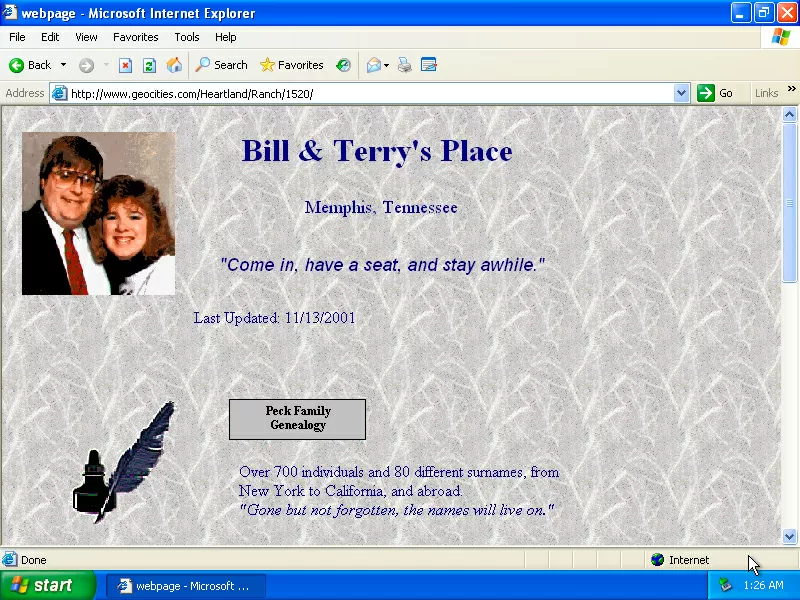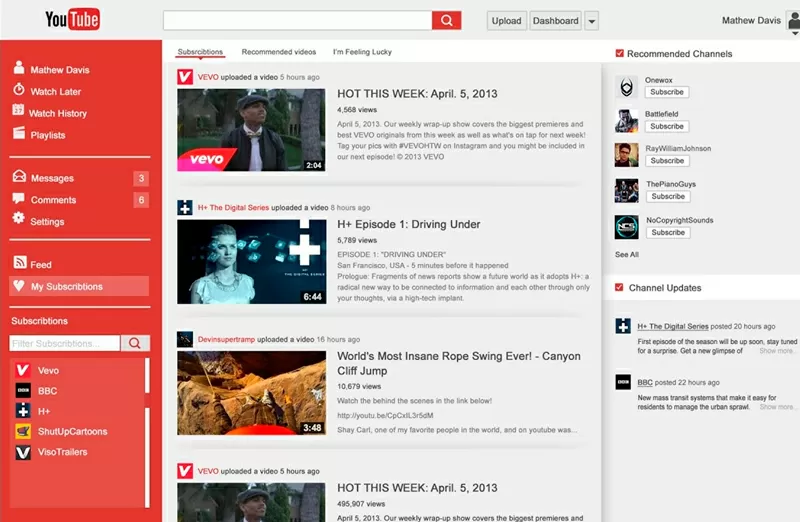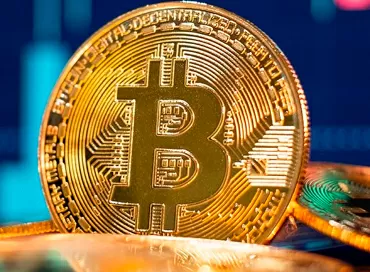What is Web 2.5?
The Internet is developing rapidly, new technologies and developments are constantly emerging that affect the development of mankind. The Internet has gone a long way from Web 1.0 to Web 3.0, and a lot has changed a lot in more than 50 years of its existence.
Today, everyone is actively discussing Web 3.0, but there is no clear understanding of how the third generation of the Internet works yet. Major brands and companies are actively striving to get there, although in fact the era of Web 3.0 has not yet arrived. The global Internet community is not yet ready for Web 3.0, in fact, the technology has not yet been developed to such an extent that it can be said that Web 3.0 is already being used at the present time. In this regard, a new concept of Web 2.5 has appeared, as a transitional stage to Web 3.0, and we will tell you about it in more detail today.
We have already seen two previous generations — Web 1.0 and 2.0, and we are in a hurry to find out what Web 3.0 will present. In this article we will look at what Web 2.5 is, at the same time remembering what the essence of Web 1.0 and Web 2.0 was.
Web 2.0 and Web3 .0 is consecutive iterations (phases) Internet compared to the original Web 1.0 of the 1990s and early 2000s. Web 2.0 is the current version of the Internet (a term that is often used interchangeably with "Internet") that we are all familiar with, whereas Web 3.0 represents its next phase.
Web 1.0
The experience of working in Web 1.0 was static and deprived of the opportunity to create your own sites with a variety of content, just as we do today. The Web 2.0 version brought users together through social networks and dynamic sites, while sacrificing decentralization.
Web 1.0 was the first stage in the development of the Internet. This period was characterized by the fact that content creators could be counted on the fingers, all other Internet users were consumers. At this stage of the development of the Internet, personal websites (business card sites) were popular, consisting of static pages and hosted on web servers managed by an ISP or on free hosting.

Web 1.0 can be described as a content delivery network that allowed information to be displayed on websites. Web 1.0 allowed people to search for information and consume it. There was no interaction with and between users, just as there was no generation of user content.
Web 1.0 was the Internet that fully met the needs of most website owners of that time. They needed a tool that provided people with access to their information at any time of the day, and they had this tool. Web 1.0 also removed geographical restrictions on information exchange.
Web 2.0
Web 2.0 is the second stage of the development of the Internet and a kind of social network. Web 2.0 is an internet that values user-generated content, site usability and interoperability. At this stage, it is not the technical specifications of the sites that change, but the ways of designing and using web pages.

The Internet is becoming a place of accumulation of online tools and platforms where people share their views, opinions, thoughts and experiences. Web 2.0 applications, unlike Web 1.0 applications, primarily interact with the end user. Thus, thanks to end users, they are actively developing:
- Podcasts
- Blogs
- Photo hosting
- Social network
Main features of the Web2.0 period:
- Free access to a large amount of information, which allows users to receive and classify information collectively.
- The appearance of dynamic site content that responds to user input.
- Changing the way information is transmitted between the site owner and the site users.
- The emergence of APIs that allow you to use site information using software.
- Negative impact on society and the emergence of new threats.
Web 2.0 is an opportunity to provide content and interact with other Internet users. Web 2.0 has radically changed the perception of the Internet in a short time. A striking example of the development of Web 2.0 is YouTube, which relied and relies on user content.
Web 3.0
Web 3.0 assumes greater control over information on the Internet, on the part of users. If in Web 2.0, the information entering the network no longer belonged to the user, then in Web 3.0 copyright will prevail. Web 3.0 also involves the creation of a semantic network, which will allow special programs to process content. Blockchain technologies will provide decentralization, user identification through crypto wallets and will create an open digital economy.
Interaction with the network will become more interactive with the help of a 3D interface. It will become easier for users to search for content, targeted advertising will become more targeted, and customer support will be more effective. Web 3.0 technologies are already used in Siri and Alexa voice assistants, as well as in smart home systems.
Web 3.0 is a new generation Internet technology that relies on machine learning and artificial intelligence.
At the moment, there is no clear idea what the Web 3.0 version will be, for example, it can use peer-to-peer communication (P2P) technologies, such as blockchain, open source software, virtual reality, the Internet of Things (IoT) and much more. Web 3.0 aims to make the Internet more open and decentralized.
4 ключевые особенности Web3.0
Semantic layout
Every year, programs are getting better at recognizing user content. To learn how to intuitively understand the communication of users on the Internet, artificial intelligence uses big data.
Blockchain and cryptocurrencies
Data ownership, online economy and decentralization are key aspects of the future with Web 3.0. It also provides for the ability to tokenize assets, put information on the network and use digital signatures.
3D visualization and interactivity
Web 3.0 is characterized by the appearance of 3D interfaces, which include virtual reality. The metaverse is an area that has provided users with such an experience, while communication through 3D video games is already available to users.
Artificial intelligence
Artificial intelligence is the key to turning user content into machine—readable data. Its main advantage is that it will improve, reducing human participation in its training.
Cryptocurrency in the concept of Web 3.0
- Digital crypto wallets. Any user can create a wallet and make transactions using it as a digital signature.
- Decentralization. Open dissemination of information among many users using blockchain.
- Digital economy. The ability to own data in the blockchain and use decentralized transactions creates a new digital economy.
- Compatibility. Blockchains built using the Ethereum virtual machine can easily support each other's DApp applications, wallets and tokens.
What is Web 2.5?
Today, the world's most famous brands are on their way to implementing Web 3.0 technology. The introduction of blockchain and cryptocurrencies in retail has increased dramatically since the beginning of 2021. Large brands built on models of growth, retention, and consumer engagement have spent the last year experimenting with how to implement Web 3.0 technology. Their goal was to promote direct audience engagement, community growth, and the monetization of brand intellectual property.
A number of brands have shown amazing flexibility and seriousness in their pursuit of Web 3.0, coping with many problems and finding ways to implement decentralized technology within proven Web 2.0 solutions. They combined the best of Web 3.0 (new technologies, digital IP, layout capability and strong communities) with proven models of development, growth and promotion of Web 2.0.
This intermediate point is what we call Web 2.5. It is a set of solutions that allows users to navigate through the Web 2.0 infrastructure using their Web 3.0 resources. Centralized exchanges, NFT interface markets and custodial wallets all provide clear structural examples of this intermediate point. When used correctly, Web 2.5 proves its effectiveness by enabling companies to improve their brand, enter new markets, engage their community, explore innovations and reach the next generation of users.
Since the beginning of 2021, brands have had several distinctive features of Web 2.5:
- Connection of physical and digital. Brands are closely monitoring how to use NFT to allow customers to redeem physical goods and collectibles.
- PHP of major brands. With the advent of TAI, both ordinary collectors and businesses no longer want to show their photos, but put on their PFP (profile photo) NFT. Thus, the leading NFT projects are applied as profile pictures (PFP).
- Rights and licensing. NFT is an object of intellectual property, it represents digital property (paintings, audio tracks, videos, photographs, clothing and accessories, and much more) plus a set of certain rights to it (a special certificate with metadata). NFTs prove ownership of unique digital assets using blockchain technology. NFT is a unique token stored in the blockchain, it is inseparable and exists in the singular.
With more than a year of Web 2.5 behind us, we can anticipate some trends that will determine the next stage of its implementation:
Stronger Web2 Solutions.5
Web2.5 is not a temporary trend, but a set of solutions that will become increasingly strong, recognizable and profitable as brands continue to enter the market.
Outside of PFP. To stay one step ahead, NFTs must offer users something more than art and ownership of digital assets. The utility aspect will be key.
”X-to-Earn". Brands should offer a variety of ways to join NFT communities. "Play to earn", "Visit to earn" and "Listen to earn" are just a few examples of interaction models that will be created in the near future.
Anna Efimova (jasnasoft.com)
27/05.2022










